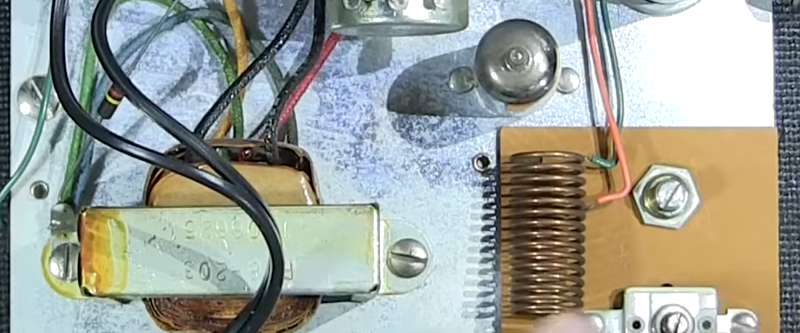Most component testers require removal of a component to test it. [Mr Carlson] recently restored an old Paco C-25 in-circuit capacitor tester. He does a very complete video tearing it down and showing how it works and why.
The tester uses an eye tube (sometimes called a magic eye tube) as an indicator. A 40 MHz oscillator produces a signal that finds open and shorted capacitors. You can also measure resistance, although you have to wonder how accurate it would be in circuit. If you want to read the original manual, there are a few copies online.
Examination of the schematic shows that the device doesn’t have a standard DC power supply. Instead, it uses self-rectification of the tubes to convert line current to rippling DC.
[Mr Carlson] has good advice about restoring these old boxes and some general advice about working with old gear in general. Honestly, we wouldn’t recommend using a device like this for practical use today. However, if you are interested in restoring old gear, this would be a good first project. These are available at relatively low expense. There are not many parts and it should be pretty easy to get one in working condition.
It might not be workable in circuit, but the standard component tester these days has a microcontroller. We’ve seen various similar modern meters but we predict you’ll miss that cool magic eye tube.
















I used to have an Eico version of the unit with the round magic eye tube. Neat, but never really used it.
Yeah, we had one back in school.
Mr Carlson’s knowledge and depth of detail (and willingness to share them) are among the best there is on You Tube. Just ogling his lab setup is enough to make any electronics geek drool a river. His videos show that older equipment, properly restored, can often do things that new equipment can’t, such as this Paco eye-tube cap tester, which can test for cap leakage at high voltage. Try getting a modern LCR meter to do that. Restoring such equipment to new condition is also hugely satisfying, something you can’t get with new equipment no matter how many bells and whistles it may have.
i love his videos. And its as simple as that aaaaaalright.
Magic Eye Tube? Well there goes the eye strain.
Old equipment not all of it is still viable for use but they sure made nice cases.
I have an old ESI 250-DA (LCR impedance bridge) with the round eye tube, for the L & C:
http://imgur.com/BxlHVo7
I thought eye tubes were round. This more a bar tube or an eye tune with a rectangular window? https://www.youtube.com/watch?v=rk9JtEKQqxM
I have never seen anyone non-jokingly pronounce soldering, “SOLD-er-ing”
In England it is common.
As is the rest of the world, including non-English speaking countries like Japan. “Soddering” is said only in America.
I like the video but I found it a little tedious at times. It could be made shorter by being a little less like teaching, as in “say what you are going to say, say it, say what you said”. Saying it once should be enough for this purpose. I really enjoyed it though.
A tester that works without removing components is very useful. Besides I love old technology.